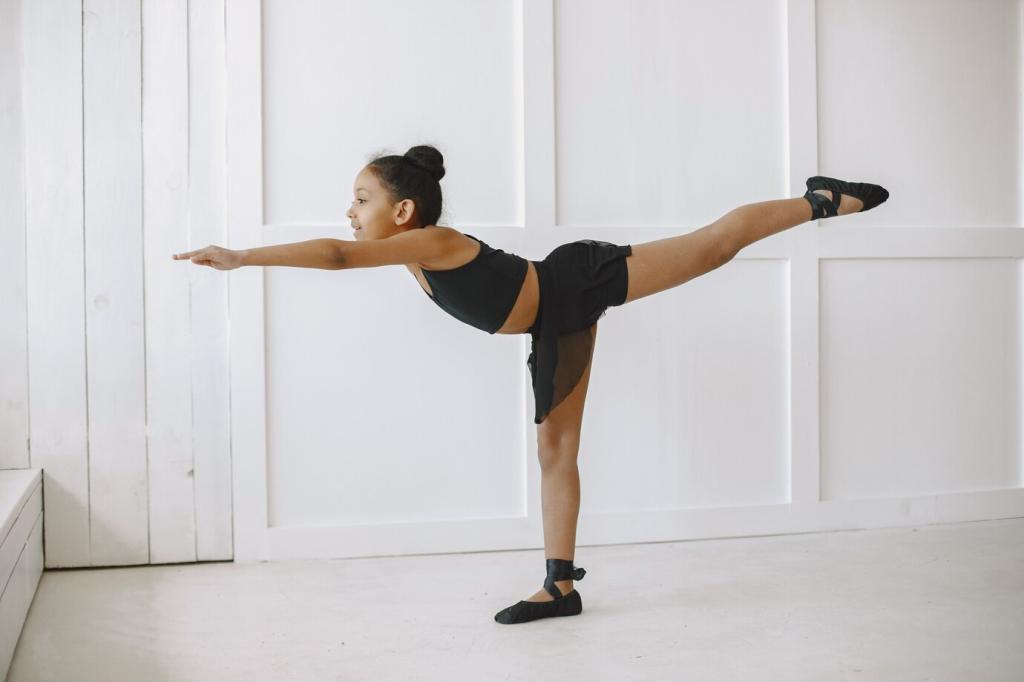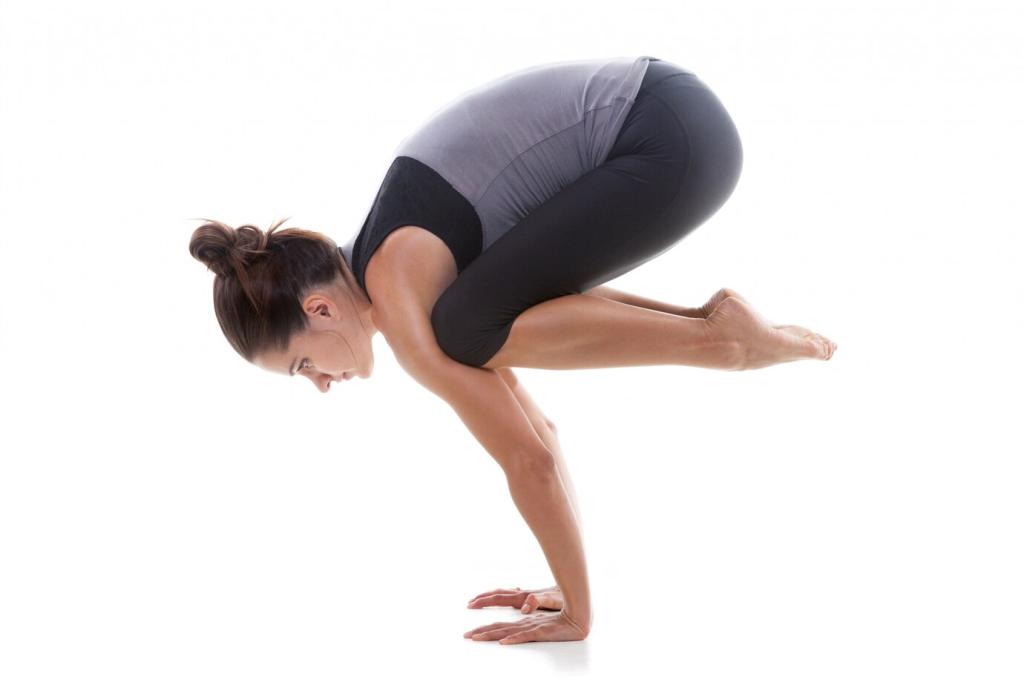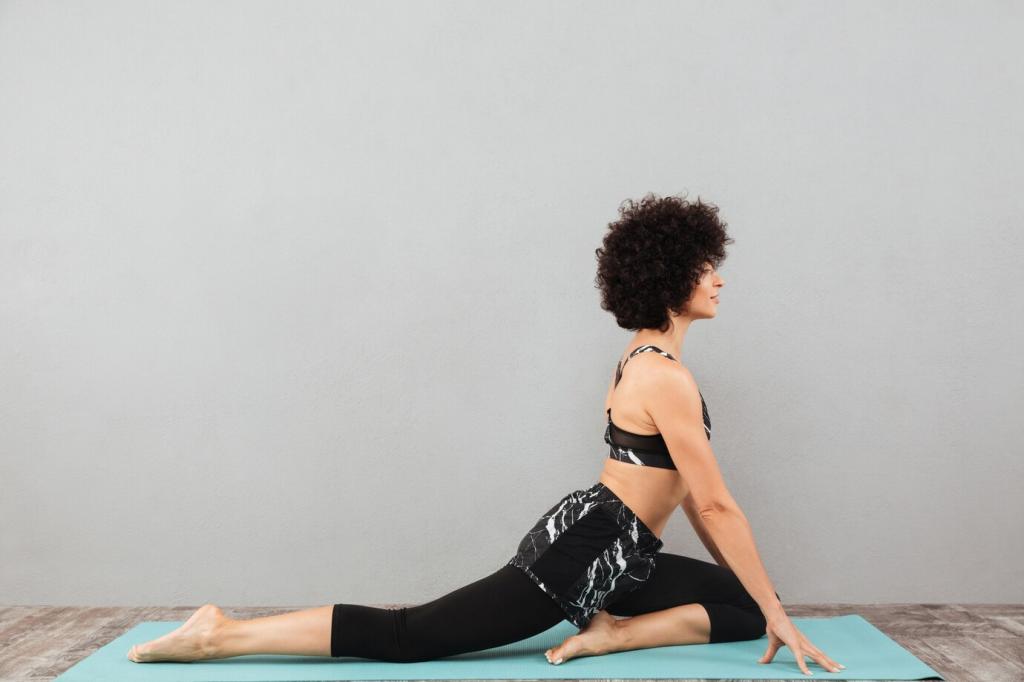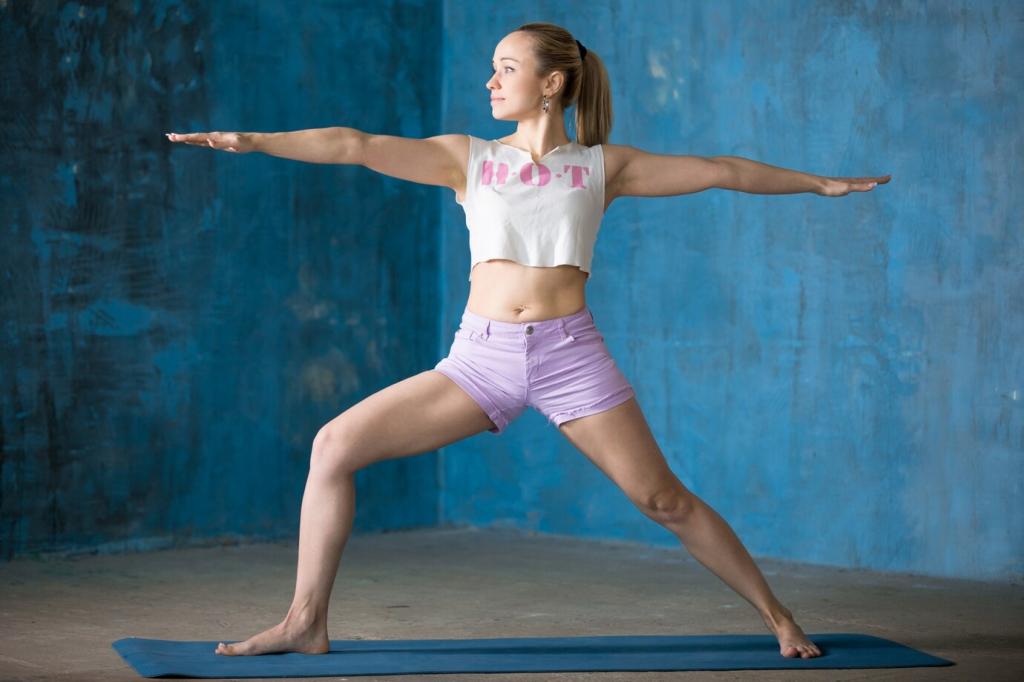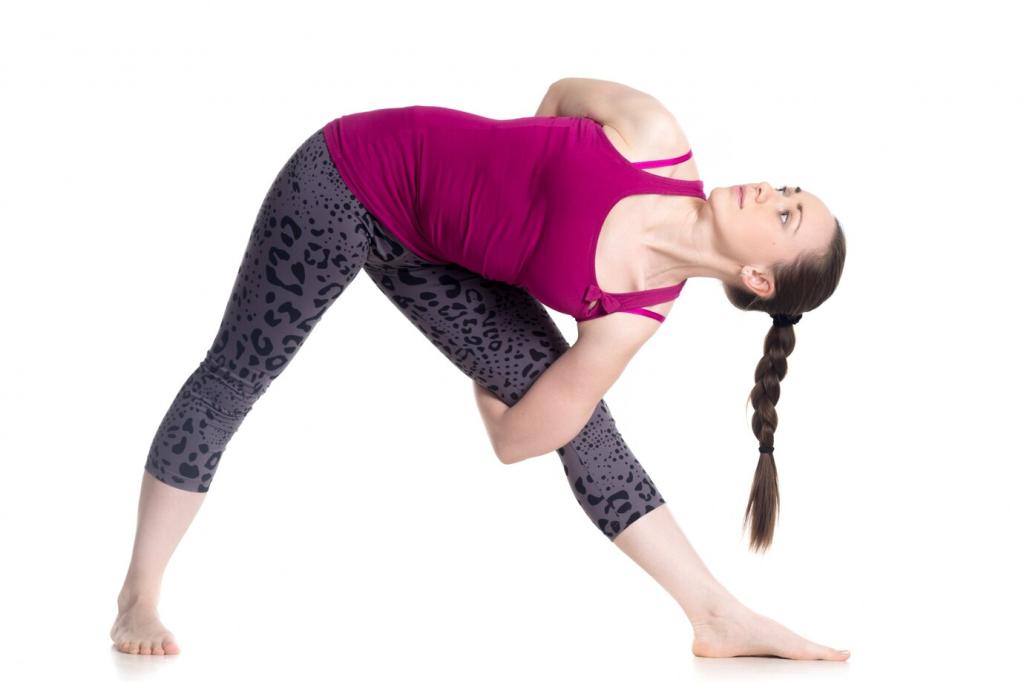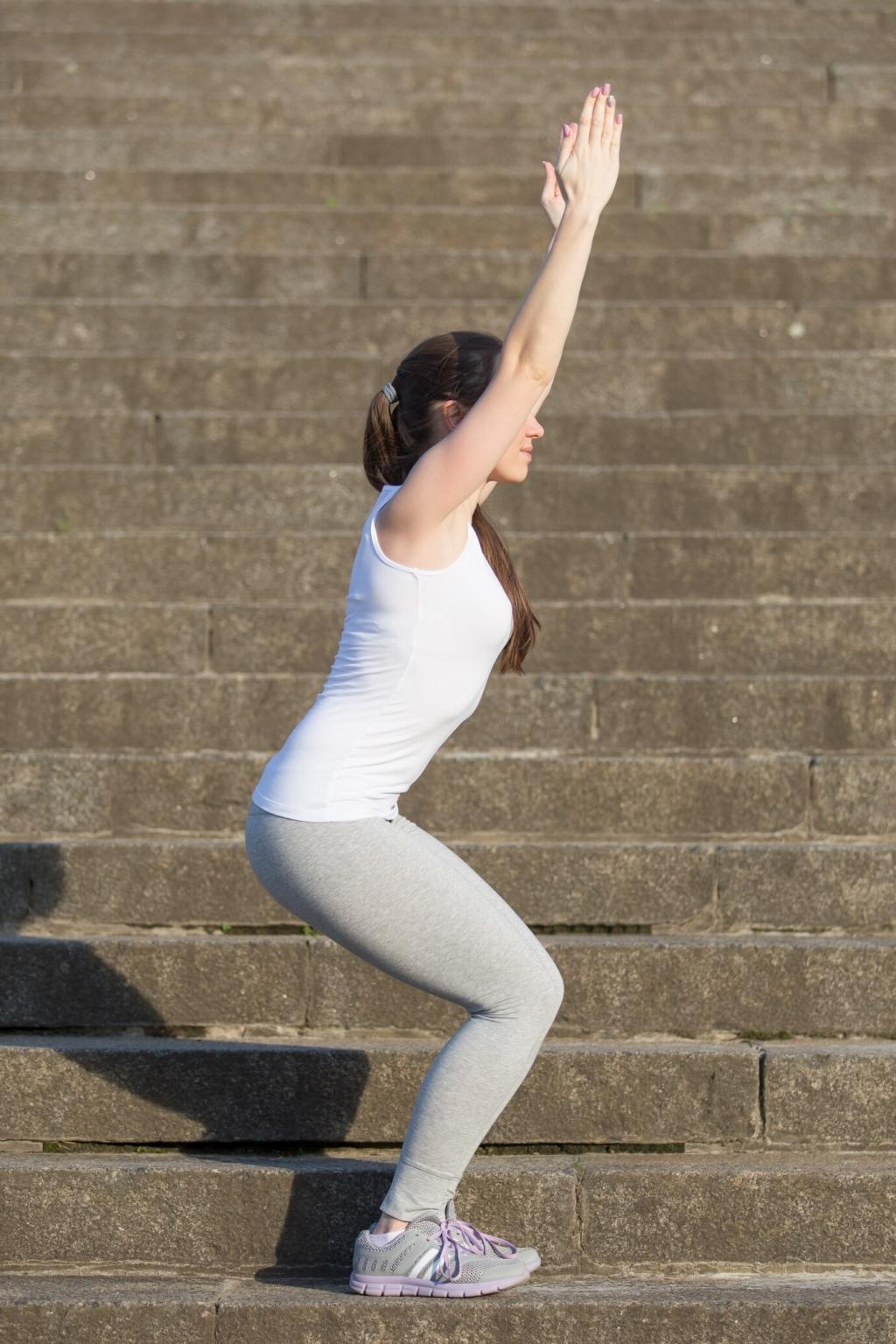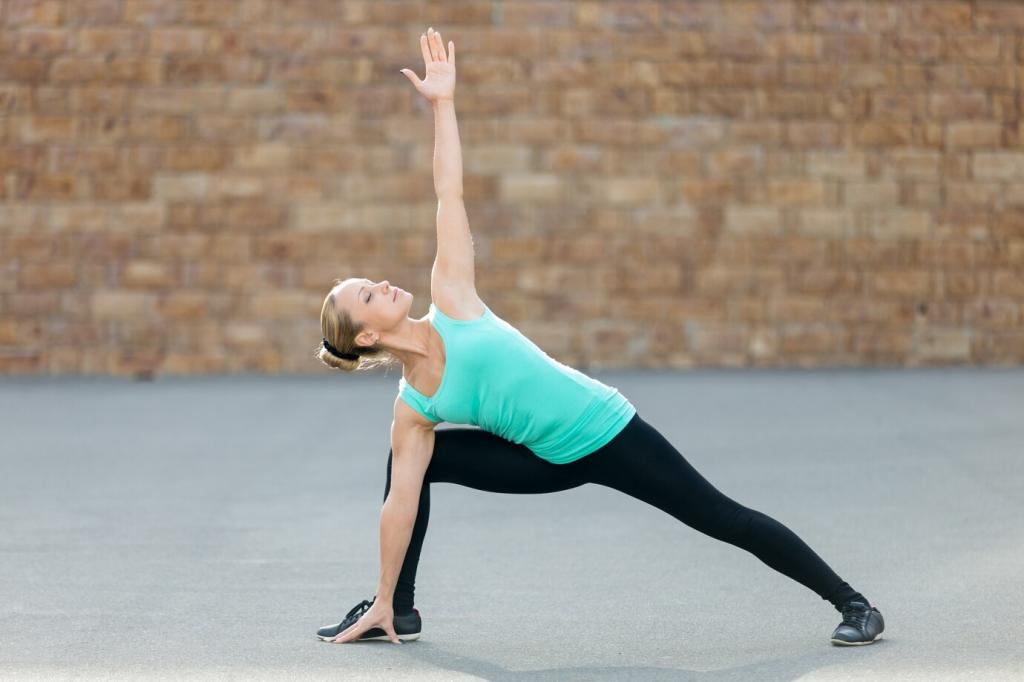Standing Strength: Warrior, Triangle, Chair
Step wide, front knee tracks over the ankle, back foot angled slightly in, and both heels anchor down. Reach arms long and soften your shoulders away from your ears. Gaze over the front hand without straining the neck. Notice how strong legs free the breath. Save this cue set for your next home practice.
Standing Strength: Warrior, Triangle, Chair
Shorten your stance and slide a block outside your front shin. Revolve your chest up while keeping both sides of the waist long. If your top shoulder rounds forward, back off and lengthen instead. Triangle is about spaciousness, not depth. Tag a friend who needs the reminder that blocks are smart, not a crutch.
Standing Strength: Warrior, Triangle, Chair
Shift weight toward your heels, sit back as if to a chair, and keep your knees soft and aligned with your toes. Reach arms forward or keep hands at heart if shoulders feel tight. Keep your breath flowing and your jaw relaxed. Try three rounds of five breaths and share how your legs felt on the last set.
Standing Strength: Warrior, Triangle, Chair
Lorem ipsum dolor sit amet, consectetur adipiscing elit. Ut elit tellus, luctus nec ullamcorper mattis, pulvinar dapibus leo.

